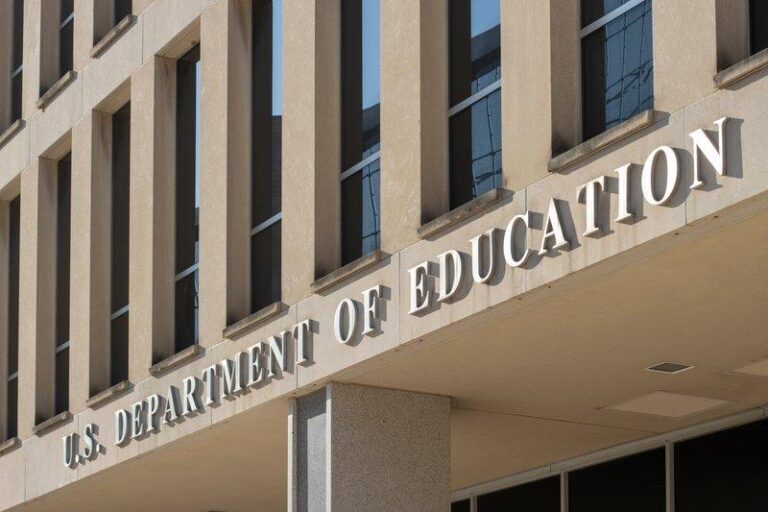The Department of Education plays a pivotal role in shaping the nation’s academic landscape, overseeing policies that impact millions of students, educators, and institutions across the United States. As debates intensify over its effectiveness and future, questions have arisen about whether the department will continue to exist in its current form or face dismantlement.This article delves into the functions of the Department of Education and examines the political and public discourse surrounding its potential dissolution.
Overview of the Department of Education’s Core Functions and Impact
The Department of Education (DoEd) serves as the central body responsible for shaping national education policies and administering public education programs across the country. Its core functions encompass the oversight of funding allocation, advancement of curriculum standards, and enforcement of federal education laws aimed at promoting equitable access to quality education. Beyond policy, the department plays a crucial role in supporting state and local education agencies by providing research, data collection, and technical assistance to improve student outcomes at every level.
- Policy Development: Crafting guidelines for equitable education access and standards.
- Funding Distribution: Allocating billions annually to public schools and universities.
- Program Oversight: Managing initiatives like special education and school lunch programs.
- Data & Research: Monitoring educational performance and innovations nationwide.
- Legal Enforcement: Ensuring compliance with federal civil rights and disability laws.
| Core Function | Impact |
|---|---|
| Funding Grants | Supports 90,000+ schools nationwide |
| Student Assessment | Improves standardized test outcomes |
| Special Education | Enhances accessibility for 7 million students |
| Teacher Training | Elevates teaching quality and retention rates |
Current Debates Surrounding the Future of the Department
Amid increasing calls for governmental reform, the fate of the Department of Education has sparked intense discourse among policymakers, educators, and advocacy groups. Critics argue that the department’s extensive bureaucracy hampers innovation in schools and propose reallocating its responsibilities to state and local entities. Conversely, supporters maintain that a centralized body is crucial to ensuring nationwide educational standards and equity. This divergence highlights a broader debate on the balance between federal oversight and local autonomy in shaping the future of education policy.
- Pro-Dismantling Arguments: Streamline operations,reduce federal spending,empower local control.
- Anti-Dismantling Arguments: Preserve consistent standards, protect marginalized groups, maintain federal funding.
- Neutral Perspectives: Propose restructuring rather than outright elimination.
| Stakeholder | Position | Key Concern |
|---|---|---|
| Federal Legislators | Diverse | Budget constraints and policy impact |
| State Governments | Mixed | Autonomy vs.funding dependency |
| Teachers’ Unions | Oppose Dismantling | Job security and education standards |
| Parents & Students | Varied | Quality and accessibility of education |
Expert Analysis on the Implications of Potential Dismantling
The proposal to possibly dismantle the Department of Education has sparked intense debate among policymakers and education experts. Critics argue that dissolving the department could undermine national standards and reduce accountability across public education systems. Central concerns include:
- Fragmentation of resources leading to inconsistent funding allocations
- Loss of federal oversight in critical areas such as civil rights enforcement and data collection
- Compromised support for underserved communities that rely on federal programs
Supporters of dismantling contend that returning education control to states and local authorities could increase innovation and efficiency. However, the balance between decentralization and maintaining a cohesive national strategy remains delicate. As the debate evolves, educators and policymakers are closely monitoring possible outcomes.
| Key Area | Potential Impact of Dismantling |
|---|---|
| Federal Funding | Risk of uneven distribution and loss of targeted grants |
| Accountability | Reduced enforcement of nationwide education standards |
| Support Services | Possible gaps in special education and nutritional programs |
Recommendations for Policy Makers and Stakeholders Moving Forward
Policy makers and stakeholders must prioritize a comprehensive analysis of the Department of Education’s core functions before making any decisions that could impact the education system’s stability. Collaborative engagement with educators, parents, and community leaders is crucial to maintain transparency and ensure reforms align with the practical needs of schools across the nation.Additionally, investing in innovative education technology and teacher development programs should be emphasized to foster long-term improvements in student outcomes and accessibility.
Moving forward, it is essential to consider the following strategic actions:
- Conduct impact assessments to understand potential consequences of restructuring or dissolving the department.
- Strengthen data-driven policy making by utilizing real-time school performance and demographic data.
- Ensure equitable resource distribution particularly in underfunded and rural school districts.
- Expand partnerships with local governments, nonprofits, and private sectors to support education initiatives.
| Key Focus Area | Recommended Action |
|---|---|
| Teacher Support | Enhanced professional development and retention incentives |
| Funding Allocation | Targeted investments in underserved communities |
| Policy Transparency | Public consultations and clear interaction channels |
Final Thoughts
the Department of Education plays a critical role in shaping national education policy, overseeing federal funding, and ensuring equal access to quality learning for all students.While recent discussions about dismantling or restructuring the department have sparked debate among policymakers and stakeholders, its future remains uncertain amid shifting political landscapes. As the dialog continues, stakeholders and the public alike will be watching closely to see how any potential changes might impact the education system at large. The Times will continue to monitor developments and provide updates on this critically important issue.




